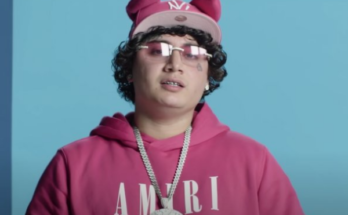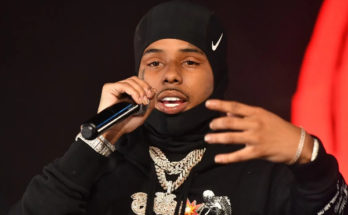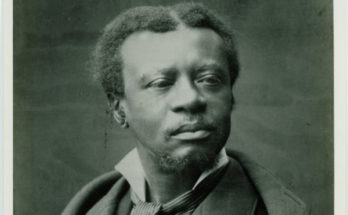Quick Facts
| Net Worth | Not Known |
| Salary | Not Known |
| Height | Not Known |
| Date of Birth | Not Known |
| Profession | Musicians |
Most people would describe Robert Smith as a fantastic musician with an eccentric style who arguably set precedence for the goth subculture with his stage appearances. He is a bundle of talent; a spectacular singer, exceptional songwriter and record producer. Additionally, he is also a multi-instrumentalist, guitarist and lead singer of the rock band ‘The Cure’ where he has been the only continuous member since he co-founded the band in 1976.
Robert knows his onions when it comes to music and has been around for several decades, churning out several brilliant works. He became an inductee of the Rock and Roll Hall of Fame in 2019, an achievement which is well deserved.
Robert Smith’s Early Life and Musical Beginnings
Born Robert James Smith on the 21st of April 1959 in Blackpool, Lancashire, Robert grew up in a family of staunch musicians. His mother played the piano while his father was a singer. His family moved around for a while when he was young and he attended St Francis Primary School, St Francis’ Junior School, Notre Dame Middle School 1970-1972, St Wilfrid’s Comprehensive School 1972 -1977.
He began taking piano lessons with his younger sister at a very young age but decided to take up the guitar due to sibling rivalry. He admits that his sister (Janet) was a piano prodigy but couldn’t get her hand round the neck of a guitar.
His brother (Richard) began to teach him some basic chords on the guitar when he turned 7 years old. By age 9, he began to take classical guitar lessons. He revealed that he began to lose the sense of fun in playing and soon gave up formal tuition. He then turned to teaching himself to play by ear and listening to his brother’s record collection.
When he turned 13, he began to take rock music more seriously and began to learn and play. He received a guitar as his Christmas present in 1972 which really aided his learning.
Robert began a band while in St Wilfrid Secondary School and claimed that he was expelled from the school because he was deemed an ‘undesirable influence’.
Journey To Fame
The group he started with his schoolmates was named ‘Malice’ before becoming ‘Easy Cure’ by 1977. From the history of the group, Robert didn’t set out to be the singer and frontline man of the group, he fell into the role by default. He admits that he was initially the drunk rhythm guitarist who wrote weird songs. But had to take up singing after they went through 5 singers. The group began to gain attention after their 1979 tour with Siouxsie and the Banshees. By observing Siouxsie, he learned how to be the frontline person. Subsequently, he built up his confidence and began to work on his stagecraft.
All the band members contributed to writing the lyrics in the early days but Robert claimed to have written ninety percent of the songs. The initial group line up was Robert playing the piano, Marc Ceccagno as lead guitarist, Michael Dempsey as a guitarist, Alan Hill on the bass and Lol Tolhurst as a percussionist. As band members left, Robert had to take up singing and has been the only constant member since the group began.
Other Collaborations
View this post on Instagram
As he gained exposure, he collaborated with several bands, including Simon Gallup on the Cult Hero project. He also went on tour with Steven Severin and Siouxsie.
He performed at the Rainbow Theatre in London as part of a unique line-up of Stranglers. He collaborated with ‘And Also the Trees’ between 1981 and 1982, as well as Severin on ‘The Glove’ in 1983.
Despite the temporary dissolutions experienced in ‘The Cure’, mainly due to band members quitting, Robert never gave up on the band and found ways to constantly get members together. Between them, the band has recorded thirteen albums and had 29 concert tours.
Stage Persona and Pop Culture Influences
Robert took up his distinct stage persona in the early 1980s. He sported a dishevelled black hair, black clothes, creepers, smeared red lipstick, and eyeliners against his pale skin. His new look coincided with the time goth subculture started gaining prominence. While he has refused to take credit for the trend, he has been named one of the trendsetters of the style. Several of the band’s songs and lyrics have been used and referred to in popular culture, especially in television, films and books.
Robert has done some cameos and once voiced an animated version of himself in South Park: Mecha-Streisand (1998).
Awards and Other Recognitions
In 2019, Robert was inducted into the Rock and Roll Hall of Fame as a member of the Cure. In 2001, he got an Ivor Novello Award for International Achievement. In 1991, the group won the British Awards’ ‘Best British Group of the Year’. The group also won ‘British Video of the Year with the video of the song “Lullaby” in 1990. They also won ‘Influencia Award’ of Los Premios MTV Latinoamerica in 2007. In 1992, the song “Friday I’m In Love” won the Viewer’s Choice (Europe) MTV Video Music Awards. Some of their other prestigious nominations includes 2 Grammy Awards, 1 Juno Awards, 2 MTV Europe Music Awards, 4 Music Television Awards, 7 Pollstar Concert Industry Awards, 2 Q Awards, among others.
Top 3 Richest Musicians
Also Read: Top 10 Richest People in the world with full biography and details.




